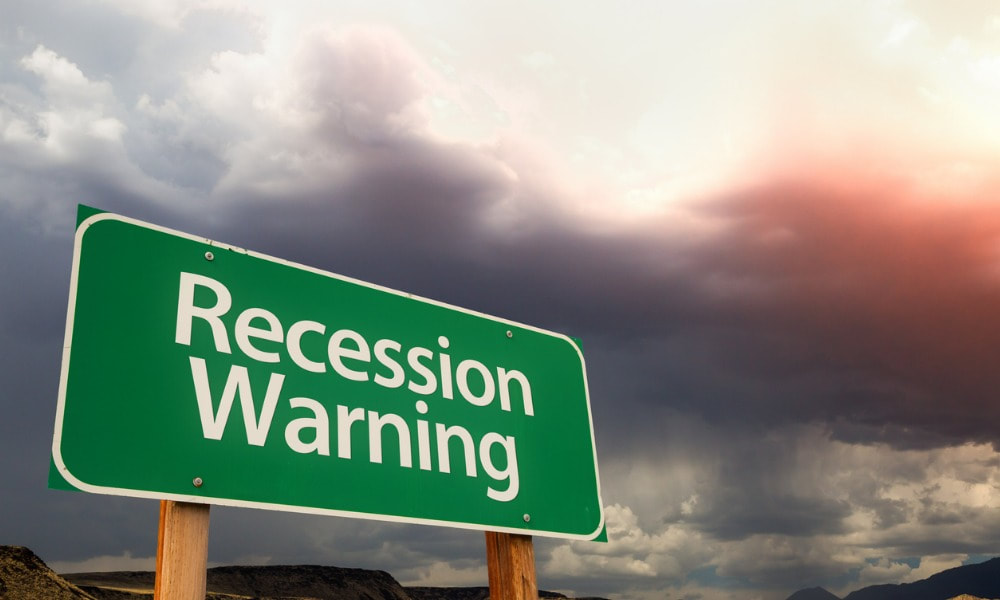|
That would see meager growth and rising unemployment – but avoid an overall economic contraction.
Forget about a soft landing. Federal Reserve Chair Jerome Powell is now aiming for something much more painful for the economy to put an end to elevated inflation. The trouble is, even that may not be enough. It’s known to economists by the paradoxical name of a “growth recession.” Unlike a soft landing, it’s a protracted period of meager growth and rising unemployment. But it stops short of an outright contraction of the economy. Powell “buried the concept of a soft landing” with his August 26 speech in Jackson Hole, Wyoming, said Diane Swonk, chief economist at KPMG LLP. Now, “the Fed’s goal is to grind inflation down by slowing growth below its potential,” which officials peg at 1.8%. “It’s a bit like dripping water torture,” added Swonk, who attended the Fed’s annual Jackson Hole symposium last week. “It is a torturous process but less torturous and less painful than an abrupt recession.” The shift in Powell’s message got the attention of Wall Street. Stock prices have swooned since the Fed chair vowed to do what it takes to rid the economy of too-high inflation. Politicians in Washington took note too. Massachusetts Senator and former Democratic Party presidential hopeful Elizabeth Warren voiced concern that the Fed could tip the economy into a recession, while Senate Republican Party leader Mitch McConnell said a downturn was likely as the central bank raises rates to combat inflation. In the archetypal soft landing in 1994-95, the Fed slowed the economy briefly and contained inflation through a doubling of interest rates. But unemployment never really rose. It just stopped falling for a while. The late New York University economist Solomon Fabricant coined the term “growth recession” in research published in 1972. While such a scenario may not be as costly as an actual contraction, it poses dangers for the economy nonetheless, he suggested at the time. A tiger contained “is not the same as a tiger loose in the streets, but neither is it a paper tiger,” he wrote. Powell has seemingly concluded that it will take a tiger -- and not just a soft landing -- to attack America’s pernicious inflation. In his Jackson Hole speech, he said the labor market was “clearly out of balance,” with the demand for workers substantially exceeding the supply. That’s led to rapid wage rises that are incompatible with the Fed’s 2% inflation target. “Reducing inflation is likely to require a sustained period of below-trend growth,” Powell said. “Moreover, there will very likely be some softening of labor market conditions” -- widely seen as a euphemism for higher unemployment. Joblessness probably held steady in August at a five-decade low of 3.5% as payroll growth slowed to 300,000 from 528,000 in July, according to the median forecast of economists surveyed by Bloomberg. The monthly data are scheduled to be released by the Labor Department on Friday. Powell said the pain that businesses and households will have to endure was preferable to the Fed failing to restore price stability now and having to inflict even more damage on the economy later. He left the door open to another jumbo 75 basis-point interest rate increase in September, telling fellow central bankers in Jackson Hole that a recent ebbing of US inflation “falls far short” of what policy makers want to see. Slowing the economy down enough to push up joblessness without tipping the economy into recession will take some luck, however. A weak economy that’s barely growing is much more likely to be knocked off course by an unexpected shock, like a renewed run-up in oil prices. “We are on the edge and very fragile,” said Moody’s Analytics chief economist Mark Zandi. “If anything at all goes off the rails, we’re going into recession,” though he added that’s not his base case. What’s more, once joblessness starts to rise, that has knock-on effects to the rest of the economy, prompting households to pull back on their spending and making a contraction in gross domestic product more likely. The so-called Sahm Rule -- developed by former Fed official Claudia Sahm -- signals the start of a recession when the three-month moving average of the unemployment rate rises by a half percentage point or more from its low in the previous 12 months. That’s a statistical regularity that’s always held, though Sahm -- who now heads her own consulting company -- cautions that there’s nothing regular about what the economy has gone through since the start the pandemic. Another sign that a recession will be tough to avoid: The ongoing downturn in the housing market in response to the upturn in Fed interest rates. In the post-World War II era, there’ve only been three times that such a weakening of housing didn’t lead to a recession -- in 1965-66, 1984-85 and 1994-95, according to Doug Duncan, chief economist at Fannie Mae. And in each of those cases, the Fed began raising interest rates before inflation had gotten out of hand, which is certainly not the case today. Duncan sees a mild recession starting in the first quarter of 2023. Bank of America chief US economist Michael Gapen said a recent string of stronger-than-expected data, including on the labor market, has made him less certain that a recession will begin in the second half of this year, though that remains his forecast as the Fed fights to get inflation under control. “History tells us that more likely than not, getting out of these situations requires more than just a few tenths of an increase in the unemployment rate,” he said.
0 Comments
Your comment will be posted after it is approved.
Leave a Reply. |
|
- iMove Chicago
- Real Estate School
-
Laws
-
CRLTO
>
- 5-12-010 Title, Purpose And Scope.
- 5-12-020 Exclusions.
- 5-12-030 Definitions.
- 5-12-040 Tenant Responsibilities.
- 5-12-050 Landlord’s Right Of Access.
- 5-12-060 Remedies For Improper Denial Of Access.
- 5-12-070 Landlord’s Responsibility To Maintain.
- 5-12-080 Security Deposits.
- 5-12-081 Interest Rate On Security Deposits.
- 5-12-082 Interest Rate Notification.
- 5-12-090 Identification Of Owner And Agents.
- 5-12-095 Tenants’ Notification of Foreclosure Action.
- 5-12-100 Notice Of Conditions Affecting Habitability.
- 5-12-110 Tenant Remedies.
- 5-12-120 Subleases.
- 5-12-130 Landlord Remedies.
- 5-12-140 Rental Agreement.
- 5-12-150 Prohibition On Retaliatory Conduct By Landlord.
- 5-12-160 Prohibition On Interruption Of Tenant Occupancy By Landlord.
- 5-12-170 Summary Of Ordinance Attached To Rental Agreement.
- 5-12-180 Attorney’s Fees.
- 5-12-190 Rights And Remedies Under Other Laws.
- 5-12-200 Severability.
- Illinois Eviction Law (Forcible Entry And Detainer)
- Illinois Security Deposit Return Act
-
CRLTO
>
- Today's Cool Thing
- Social Media



